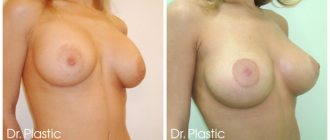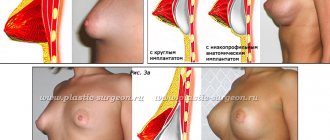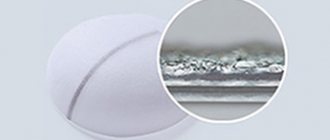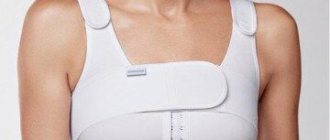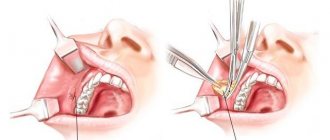Breast augmentation surgery is one of the most popular services of plastic surgeons, because according to statistics, about 70% of women are dissatisfied with the shape of their bust. To make the mammary gland look more voluminous, special implants are used. Most modern breast implants are made from hypoallergenic materials. Today, surgeons have options of various shapes and sizes at their disposal, the correct selection of which determines the result of plastic surgery.
- Types of Breast Implants
- What are the implants filled with? Salt
- Silicone
- Hydrogel
Types of breast implants
The times when an implant was solely a hemisphere filled with liquid are gone. Surgeons use different models, which vary:
- by filler;
- to size;
- according to form;
- by surface type.
The plastic surgeon selects the product, taking into account the physiology of each individual patient, as well as his wishes for the shape and size of the bust. Each type of breast implant has its own characteristics, which the doctor takes into account when planning the operation.
Other useful material
Alternative to basal implantation
Implant installation
The best Swiss implants
Zirconium dioxide crowns: pros and cons
What are the implants filled with?
A breast enlargement implant consists of a durable shell and filler. The quality and durability of the structure, as well as the need for its replacement, largely depend on this content. Currently, the following types of prostheses exist:
- saline;
- silicone;
- hydrogel.
Relatively recently, implants filled with small silicate balls have been introduced into use. They are lightweight, but have not yet been studied to the required extent.
Salt
This is the very first type of breast implants that appeared at the disposal of plastic surgeons. Inside the durable shell there is a physiological solution that does not cause harm to the body even if it penetrates the tissue. This type of prosthesis is considered obsolete, and most clinics have long abandoned its use. However, the product was not without advantages, including:
- low price compared to analogues from other materials;
- the possibility of filling after implantation, which allows you to get by with a minimum length incision;
- relative safety in case of rupture, since saline solution is completely safe for tissues.
The disadvantages of saline implants include:
- low strength and high risk of rupture;
- wear and tear over time due to movement of the chest during breathing;
- the need for repeated surgery in case of damage to the prosthesis;
- softness;
- gurgling sounds during movements that can be heard by others;
- significant weight, which can eventually lead to severe sagging of the breast.
IMPORTANT! The installation of saline prostheses could cause a “washboard effect” or ripping, when small folds appeared on the surface of the breast skin in a certain position.
All these shortcomings at one time became the reason for the gradual decline in the popularity of saline breast prostheses.
Silicone
Silicone is the currently most popular type of filler. During their use, these implants have undergone a number of changes. The first generation versions were far from ideal: they had a fragile shell and broke over time. The main cause of damage was not injuries, but the respiratory movements of the chest, due to which the shell of the prosthesis gradually became thinner. Early models of silicone implants required replacement every few years.
Inside modern silicone implants of the latest generation, silicone has the consistency of a thick gel, which completely retains its shape and does not spread even if the shell is accidentally damaged. The shell itself has also become much stronger. During testing, it was subjected to repeated deformations, and they did not lead to ruptures.
Depending on the characteristics of the gel, there are several types of silicone implants:
- standard cohesive (well imitate gland tissue);
- highly cohesive (practically not deformed due to high density, but the breasts feel unnatural to the touch);
- Soft touch (soft gel with a memory effect, i.e. restoring its shape when compressed).
Here are the advantages of modern silicone implants:
- provide a natural appearance to the breasts, being correctly selected by the doctor in size;
- not detectable by touch;
- many manufacturers claim that the implants they produce have a lifetime warranty;
- extremely rarely cause allergies
- rarely cause capsular contracture (growth of scar tissue around the implant);
- They have a “memory effect”: they restore their shape after compression.
The GALAXY Beauty Institute uses the most advanced silicone implants of the latest generation from the world's leading manufacturers.
IMPORTANT! Such an implant can only be damaged if there is significant trauma or puncture of the chest. That is why, if such manipulation is necessary, it is necessary to inform the doctor in advance about the installed implant.
The disadvantages of silicone structures include the need for a full cut to install them, as well as the inability to detect damage by touch. Diagnosis requires an MRI.
Hydrogel
The basis of the hydrogel is the natural substance carboxymethylcellulose. They are not cheap, but have a number of advantages:
- do not cause allergic reactions, inflammation or rejection;
- do not damage tissues: if the contents are released, it breaks down into glucose, water and carbon dioxide, which are safe for the body;
- do not interfere with mammography.
The main disadvantages of hydrogel are the high price and a gradual decrease in volume due to the slow seepage of the filler outside the shell.
How long will new breasts last?
Will it be necessary to change implants over time? This question is asked by every woman who decides to undergo mammoplasty. The service life (shelf life) of modern endoprostheses is quite long. Manufacturers provide a lifetime guarantee for many types, but there are several situations that force women to undergo repeated surgery after 10-15 years. These include:
- damage to the capsule;
- change in the proportions of a woman’s body, and deterioration in the shape of the bust (due to changes in weight, pregnancy and lactation).
A less pleasant example is the story of Pip implants. New materials are still being studied, and the consequences of their use are becoming clearer over the years. Pips were filled with a technical version of silicone. And since their capsule could not provide complete tightness, the silicone leaked and harmed the woman’s health. Now the manufacturer is looking for clients with this type of implant and offering a replacement.
Implant sizes
The size of the implants is determined very simply - by the volume of the filler. Depending on the model and manufacturer, various products have their own “size chart”. On average, every 150 ml adds one size to the patient’s bust.
The size also includes the width of the implant base. This parameter is important because if you use too wide or narrow options, the breasts will look unnatural.
Sizing is selected depending on:
- structural features of the chest;
- the initial size of the mammary gland and its shape;
- chest width;
- woman's height;
- skin elasticity;
- the patient's wishes.
If for some reason a woman cannot get large implants, the operation can be carried out in several stages. First, a small-volume implant is installed; after some time, when the tissues stretch, a larger version can be installed.
Disadvantages of short implants
Short implants have a very limited scope of application, and this must be recognized as a fact. This does not mean that they are bad, it’s just that their design features do not allow achieving optimal results in a number of cases. You can't compare a truck and a racing car, which were originally designed for different purposes. The same can be said about short implants: they have a number of features (some would call them disadvantages), which should be paid attention to and the patient should be warned about them before starting treatment.
- Limited possibilities for prosthetics. Problems may arise in the area of contact between the implant and the abutment; for this reason, the planar connection method cannot be used in this case. The greater the angle of inclination of the abutment, the higher the risk of loosening the fixation.
- Short implants are not intended to restore teeth in the aesthetic zone. This is due to the lack of variability in prosthetics and the need to increase the size of the superstructure (abutment and crown), which often does not look very aesthetically pleasing.
- Short implants are not installed in narrow interdental spaces.
Form
The shape of the breast implant is one of the most important parameters that the plastic surgeon will have to determine when planning the operation. Today there are two options in use:
- round;
- anatomical (drop-shaped).
Round implants are a hemisphere (dome). Depending on the thickness, low and high profiles are distinguished. This shape helps to visually lift the breasts and make them more attractive. It is suitable for correcting sagging breasts, as it fills both the upper and lower parts equally well.
Anatomical implants have the shape of a drop: the voluminous lower part goes into a flattened top. Depending on the height of the main zone, low, medium and high profile options are distinguished. This shape provides a natural and neat appearance to the breasts. Anatomical implants are suitable for women with small breasts and a narrow chest.
IMPORTANT! The shape of the implant is chosen exclusively by the doctor when interacting with a specific patient. The doctor also decides what type of implant surface should be used.
Indications
There are no medical indications for undergoing breast augmentation in a plastic surgery clinic. In other words, the reason for surgical correction of the mammary glands is a woman’s desire to correct the shape or size of her bust. Therefore, plastic surgeons identify the following aesthetic deficiencies that can be eliminated during surgery:
- asymmetrical breast shape;
- micromastia (small breast size);
- sagging, drooping (ptosis) of the mammary glands after pregnancy and breastfeeding;
- condition after mastectomy (surgical breast removal);
- woman’s dissatisfaction with previously installed implants (their shape, size, etc.).
Should You Enlarge Your Breasts? The answer to this question is simple. If you have:
- breasts are too small compared to the rest of the body;
- there is discomfort while wearing a swimsuit, tight clothes or a large neckline;
- there is a problem with choosing clothes - what fits on the hips is too big in the chest;
- after childbirth, the breasts changed, ptosis of the mammary glands or other bust deformations developed;
- the breasts have decreased in volume and the skin has sagged due to sudden weight fluctuations;
- the mammary gland is noticeably smaller than the other;
- you need plastic surgery. Breast augmentation (mammoplasty) is the most correct and correct solution in cases where a woman experiences psychological discomfort from the inferiority of her own body. Surgical bust correction will allow young girls and older women to increase their own self-esteem, as well as get rid of complexes and problems. Mammoplasty today is considered the most reliable and effective way to increase the size and volume of the mammary glands, as it provides long-lasting results after plastic surgery.
Surface types
Currently, breast implants are available with a smooth or rough surface. Each option has its own characteristics. Smooth dentures:
- are characterized by increased softness;
- more often lead to the development of capsular contracture (the growth of coarse scar tissue around the implant);
- change their position inside the body more easily.
Many plastic surgeons prefer implants with a porous, rough surface. They are less likely to move and also significantly reduce the risk of developing capsular contracture. However, textured ones are not without their drawbacks: under certain circumstances, they can cause a “washboard effect”, in which the skin over the gland periodically bunches up.
What types of endoprostheses are there?
The main difference between implants is the shape. They are divided into two types: round and drop-shaped (anatomical). The latter are considered more similar to the natural anatomical shape of the mammary gland.
The filler in endoprostheses can be:
- Silicone gel.
- Sodium chloride solution (saline solution).
- Other biopolymer materials.
The surface of implants can also be different: smooth or textured. According to the profile (i.e., according to the degree of protrusion forward), medium, high and extra-high are distinguished.
By combining all these options, you get a huge selection of implants. To resolve the issue of breast surgery, it is not enough to decide only on the filler for the endoprosthesis; it is necessary to correctly take into account all other parameters.
There is no ranking of the popularity of implants. Everyone has their own preferences and desires, but there are still certain rules for choosing the right implant from a medical and aesthetic point of view.
Options for installing breast implants
In addition to the type of breast implant, the installation option is very important. The shape of the new bust and the risk of some complications depend on this. Surgeons use the following methods of placing implants in tissues:
- under the mammary gland;
- under the pectoral muscles;
- mixed option.
The subglandular location of the implant may be suitable for women with large breasts, since the volume of their own tissues masks the edges of the prosthesis. The main advantages of this installation: a significant reduction in healing time and minimal tissue swelling after the intervention.
Location disadvantages:
- risk of contouring the edges of the implant through the skin;
- increased chance of developing capsular contracture and ripping (“washboard effect”);
- breast sagging over the years under the weight of the prosthesis;
- possible distortion of mammography results.
If the implant is located under the muscle, recovery from surgery may take longer. But the prosthesis is not visible even in thin women, the breasts do not sag over time, and when examining the gland, the picture remains clear.
There is a mixed option for installing breast implants. In this case, the upper pole of the prosthesis is hidden under the muscles, and the lower pole is located under the breast tissue. This technique combines the advantages of both types of placement:
- low risk of breast sagging, capsular contracture, ripping;
- natural appearance of breasts;
- no distortion during mammography.
Plastic surgeons at the GALAXY Beauty Institute select the appropriate option for installing implants, taking into account the characteristics of each individual patient.
The main disadvantage of the technique is the increase in operation time and tissue recovery time.
Contraindications
Breast augmentation is not recommended for women who do not have children. The final development of the mammary glands occurs during lactation, so surgery performed before that time may disrupt the full blood supply to the breast. This factor does not affect the price of the operation. Operations are not carried out:
- patients under 16 years of age;
- in the presence of serious hormonal disorders;
- in case of severe diseases in the period of exacerbation;
- in the presence of malignant tumors and problems with blood clotting;
- during pregnancy, lactation and for six months after its end.
Stages of breast augmentation surgery:
- assessment of the condition of the mammary glands;
- conversation with the patient, decision on the type of breast correction;
- selection of an implant, decision-making on its placement location;
- determining the location of the incision and the method of implant installation.
By looking at the photos and videos in this section, you can see how women who turn to a professional plastic surgeon change.
How to choose a breast implant
The Internet is filled with various tips and tricks for women planning mammoplasty. And the woman tries to figure out for herself which type and size of implant is better to choose, tries to understand what the differences are. However, there is no universal recipe and in such an important matter you should trust the opinion of a professional. A plastic surgeon will help you understand all the key points related to mammoplasty. Doctors at the GALAXY Beauty Institute will select the optimal type of implant for each individual patient, taking into account the body type, the shape of the chest, the initial size of the mammary glands, etc.
There are several key factors that a doctor takes into account when choosing an implant:
- the wider the chest, the wider the base of the implant should be and vice versa;
- the profile of the implant determines how much the bust will protrude;
- for plastic surgery of sagging breasts, a round shape is better suited;
- thin women with a small bust need an anatomical (teardrop-shaped) shape;
- Every 150 ml of implant will add one size to the original one.
During a consultation at the GALAXY Beauty Institute, each patient will be able to evaluate the shape and size of various options live, as well as use sizers or computer modeling that allows them to virtually “try on” them. The cost of mammoplasty in our clinic includes almost everything: the operation, the implants themselves, anesthesia, compression garments, stay in the ward, meals during your stay in the clinic, 24-hour nurse supervision, bandaging, dressing materials and all postoperative examinations.
Rehabilitation
Rehabilitation after breast augmentation is the key to excellent mammoplasty results. The patient is discharged from the plastic surgery clinic after breast correction on days 2-3. For 1-2 months it is necessary to wear compression garments, which will help fix the new breast shape and prevent the development of severe swelling. Also, the patient should not raise her arms up or carry heavy objects; physical activity is prohibited. It is recommended to sleep on your back to reduce the risk of breast injury and reduce pressure on the mammary glands after surgery. You should not visit the sauna, steam bath, sunbathe in the sun or solarium.
Important!
During the first 4-6 weeks after breast surgery, a capsule is formed around the silicone implant. If you do not follow the recommendations of the plastic surgeon, then there is a high risk of developing postoperative complications, which may lead to the need for repeated breast augmentation.
The first results of the operation can be seen after 4–6 weeks, when the mammary glands begin to take on a natural shape. At this time, swelling subsides and hematomas disappear. Breasts take on their final appearance 6 months after breast augmentation surgery at Dr. Osin’s plastic surgery clinic.

